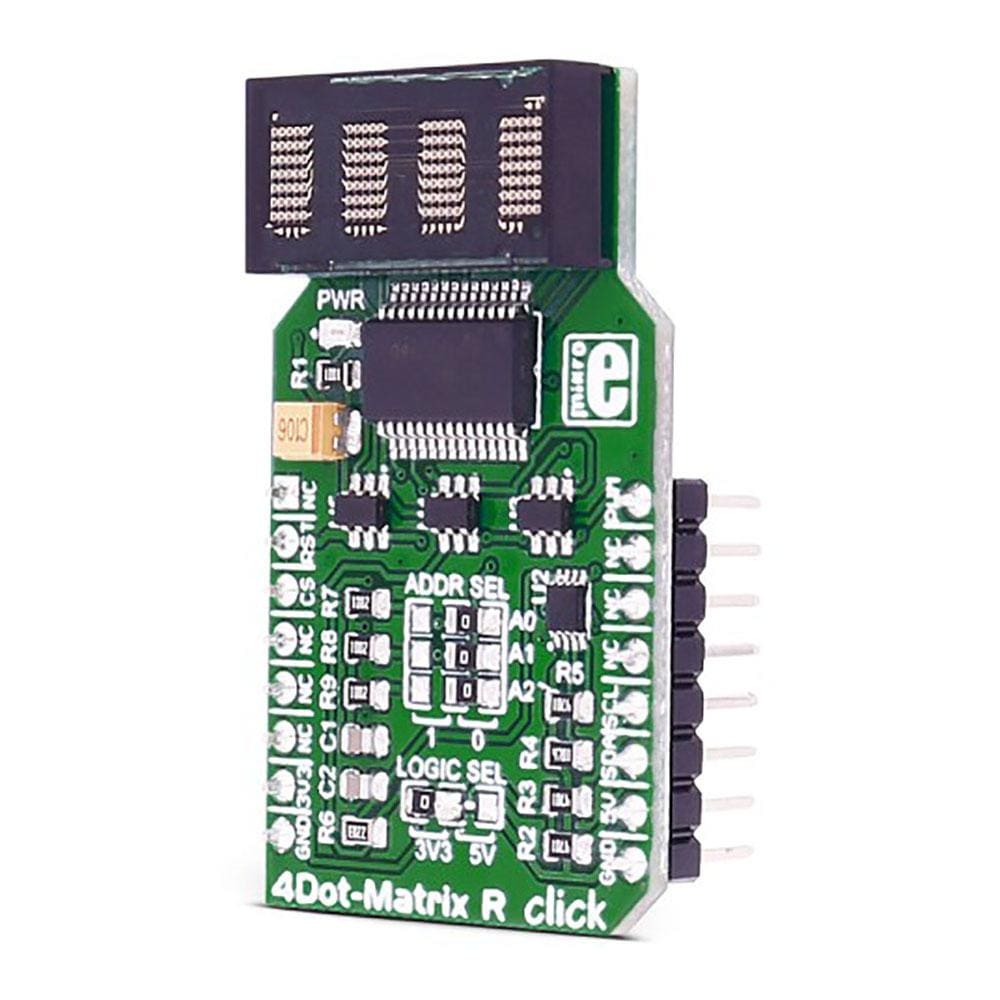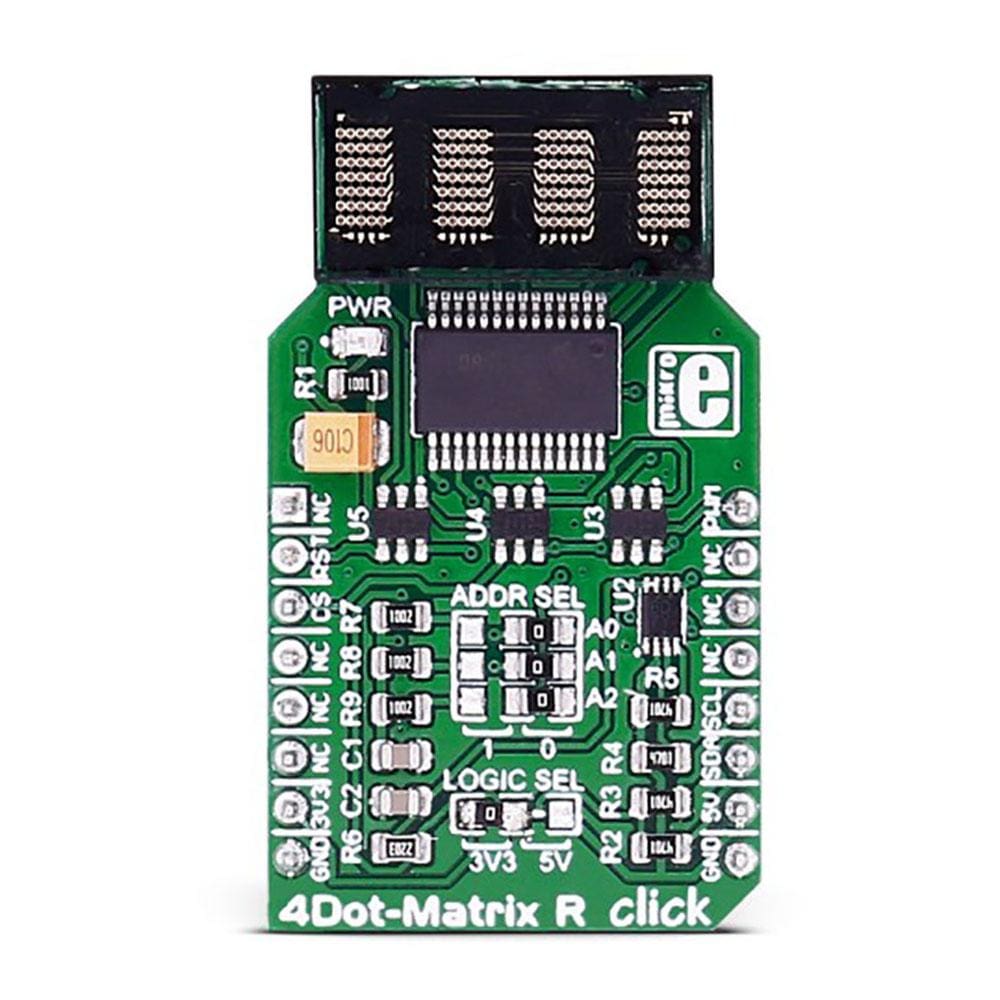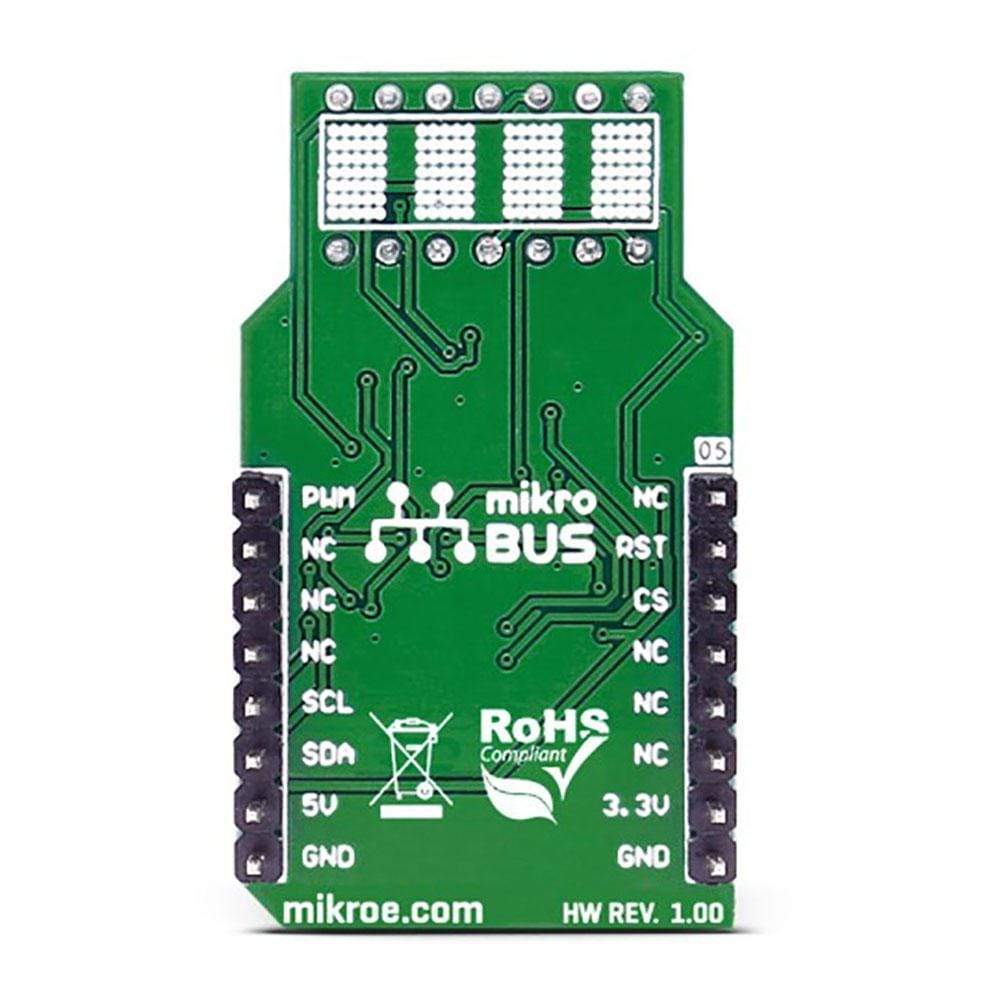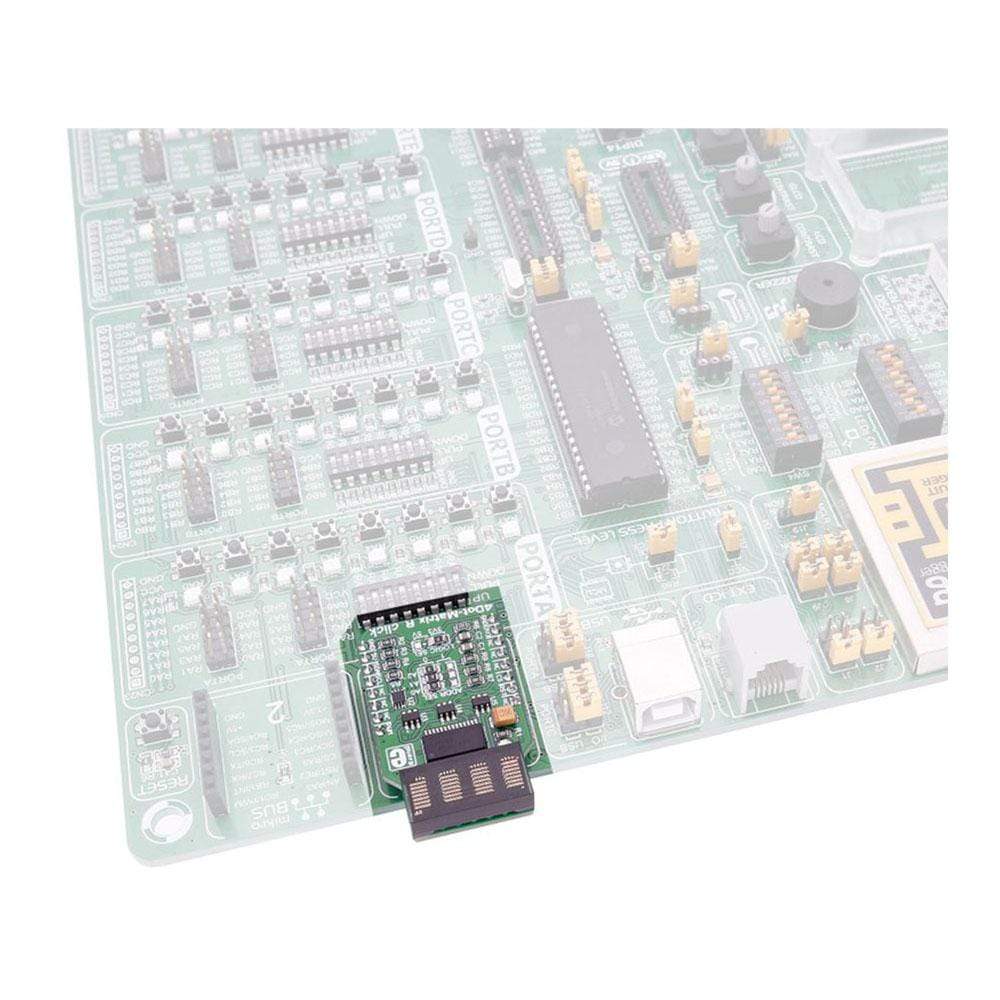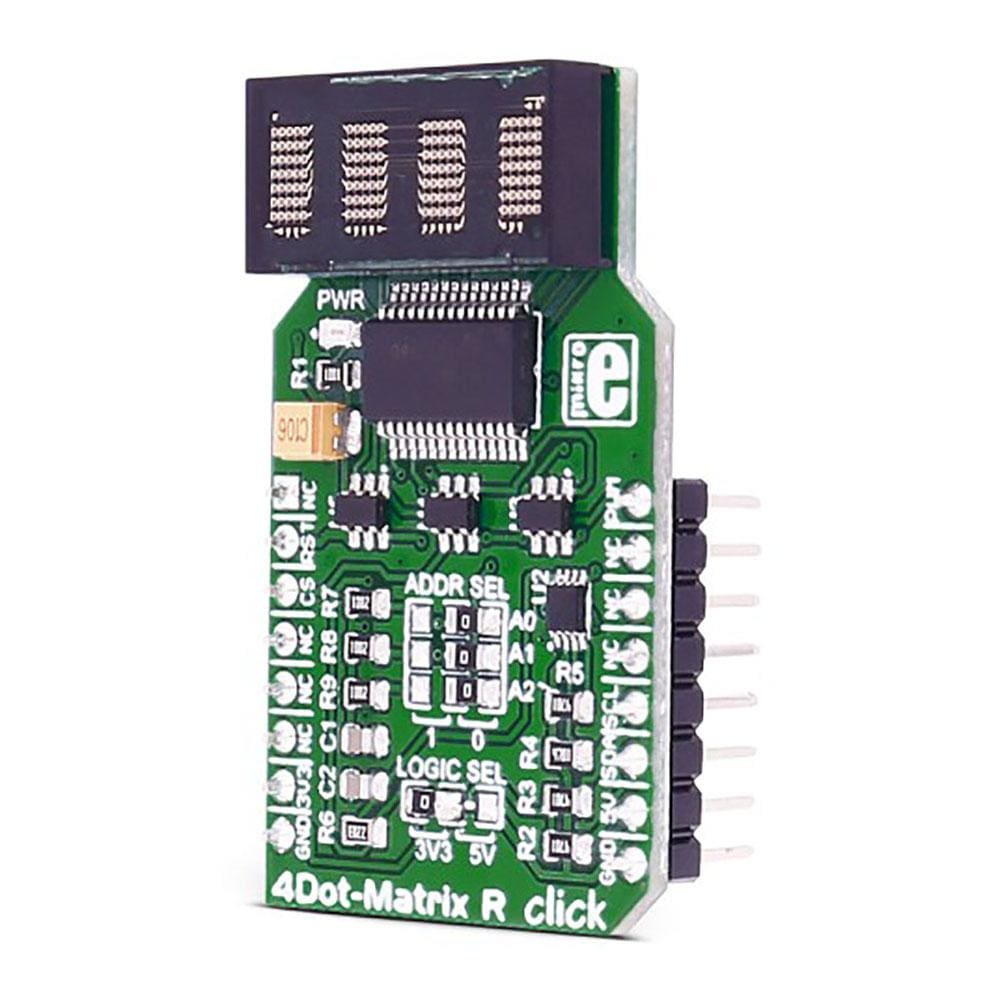
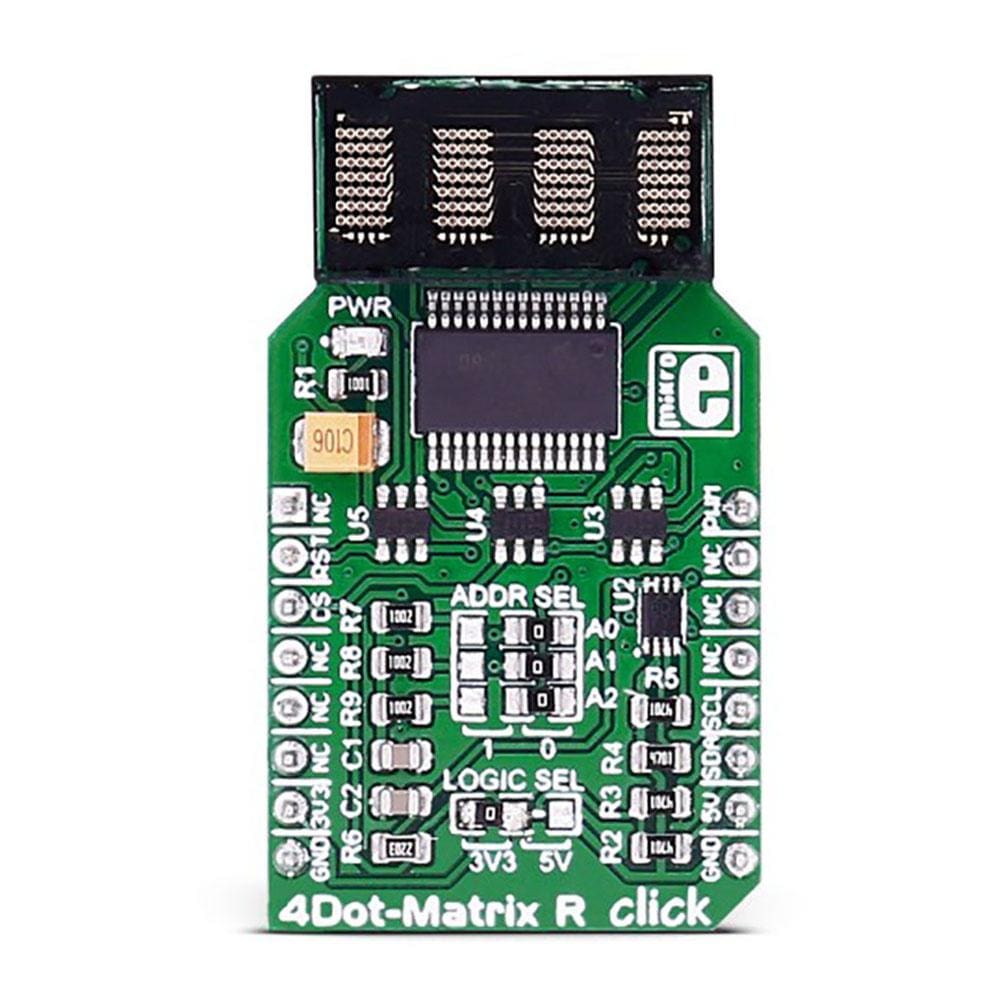
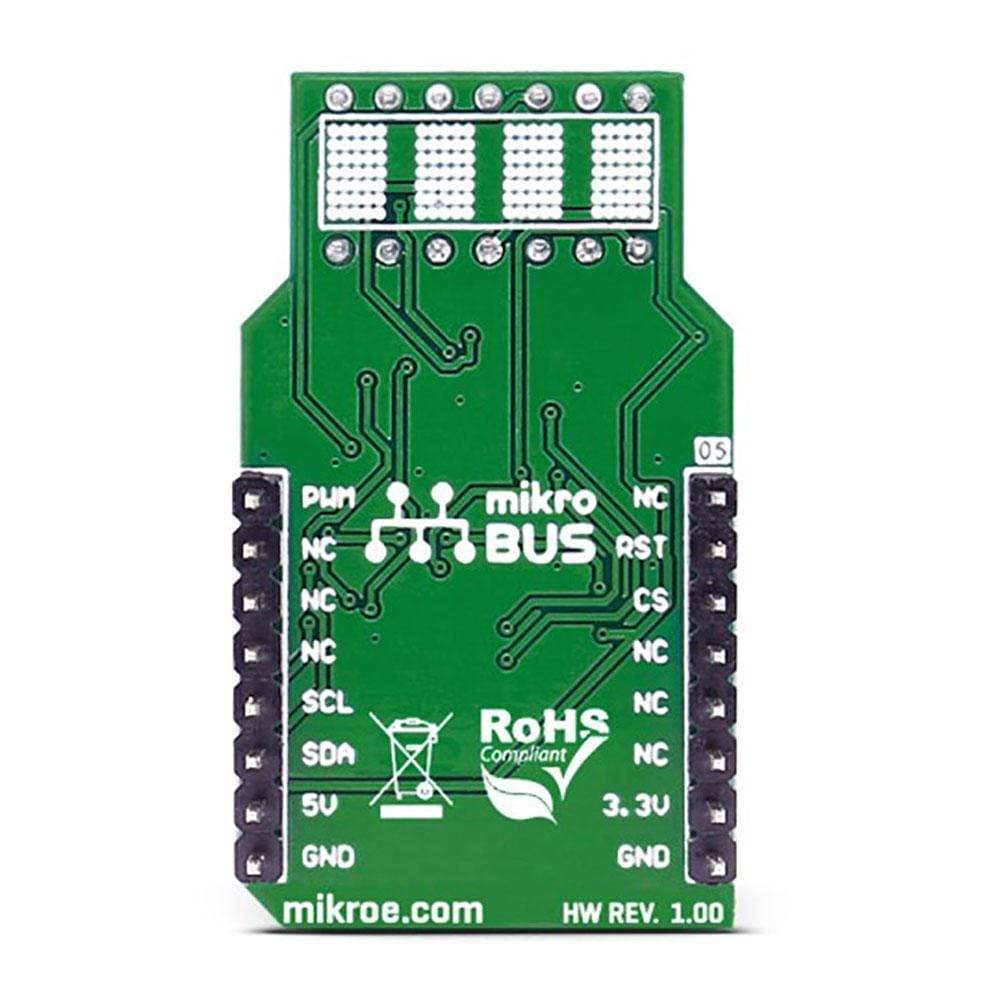
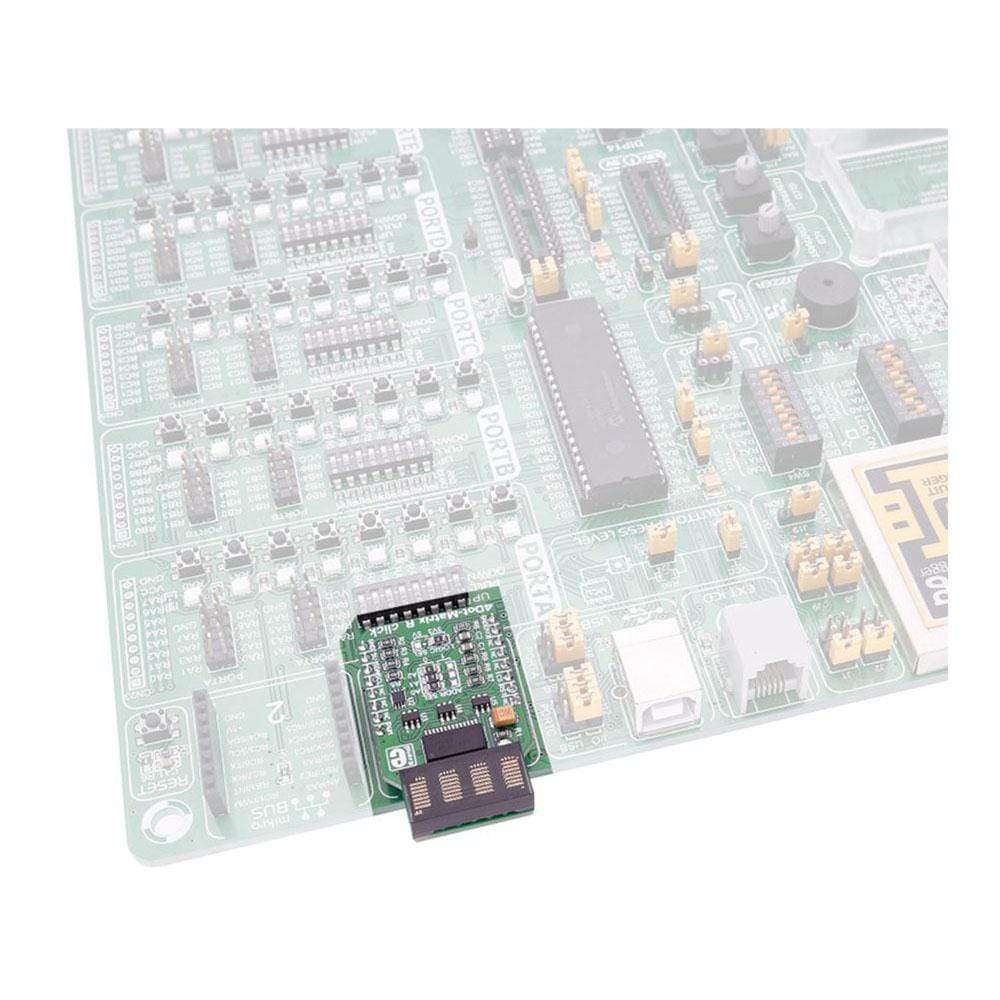
Overview
The 4Dot-Matrix R Click Board™ - Your Smart Display Solution
Upgrade your display game with the 4Dot-Matrix R Click Board™ - the ultimate display device for all your needs! With its four-digit dot matrix display module, labelled as SLO2016 from Osram, this Click Board™ is designed to make your characters stand out.
Bright and Clear Display
The 5x7 dot matrix on this module features closely spaced, bright red pixel elements that make your characters incredibly clear and easy to read. Whether you're indoors or outdoors, the pixels emit a bright red colour that ensures you can always read the display, even from up to eight feet (2.5 m) away!
Multi-Language Support
The internal ROM of this smart display contains 128 ASCII codes for letters, including special characters for English, German, Italian, Swedish, Danish, and Norwegian languages. This means that you can easily customize your display to suit your needs, no matter what language you speak.
Wide Viewing Range
The bright red display matrix has a wide viewing range, making it perfectly suited for low light situations. This means that you can use the Click Board™ in a variety of lighting conditions and still get a clear, readable display.
Easy to Operate
The 4Dot-Matrix R Click Board™ can be easily operated over the I2C interface. This makes it easy for you to connect the Click Board™ to your device and start using it right away!
Upgrade your display game with the 4Dot-Matrix R Click Board™ - the ultimate smart display solution!
Downloads
Le R Click Board™ à matrice 4 points – votre solution d'affichage intelligente
Améliorez votre jeu d'affichage avec le Click Board™ 4Dot-Matrix R - le dispositif d'affichage ultime pour tous vos besoins ! Avec son module d'affichage à matrice de points à quatre chiffres, étiqueté SLO2016 d'Osram, ce Click Board™ est conçu pour faire ressortir vos personnages.
Affichage clair et lumineux
La matrice de points 5x7 de ce module comporte des éléments de pixels rouges vifs et rapprochés qui rendent vos caractères incroyablement clairs et faciles à lire. Que vous soyez à l'intérieur ou à l'extérieur, les pixels émettent une couleur rouge vif qui vous permet de toujours lire l'écran, même à une distance de 2,5 m (8 pieds) !
Prise en charge multilingue
La ROM interne de cet écran intelligent contient 128 codes ASCII pour les lettres, y compris les caractères spéciaux pour les langues anglaise, allemande, italienne, suédoise, danoise et norvégienne. Cela signifie que vous pouvez facilement personnaliser votre écran en fonction de vos besoins, quelle que soit la langue que vous parlez.
Large champ de vision
La matrice d'affichage rouge vif offre une large plage de visualisation, ce qui la rend parfaitement adaptée aux situations de faible luminosité. Cela signifie que vous pouvez utiliser le Click Board™ dans diverses conditions d'éclairage tout en bénéficiant d'un affichage clair et lisible.
Facile à utiliser
Le Click Board™ 4Dot-Matrix R peut être facilement utilisé via l'interface I2C. Cela vous permet de connecter facilement le Click Board™ à votre appareil et de commencer à l'utiliser immédiatement !
Améliorez votre jeu d'affichage avec le 4Dot-Matrix R Click Board™ - la solution d'affichage intelligente ultime !
| General Information | |
|---|---|
Part Number (SKU) |
MIKROE-2706
|
Manufacturer |
|
| Physical and Mechanical | |
Weight |
0.02 kg
|
| Other | |
Country of Origin |
|
HS Code Customs Tariff code
|
|
EAN |
8606018710997
|
Warranty |
|
Frequently Asked Questions
Have a Question?
Be the first to ask a question about this.

